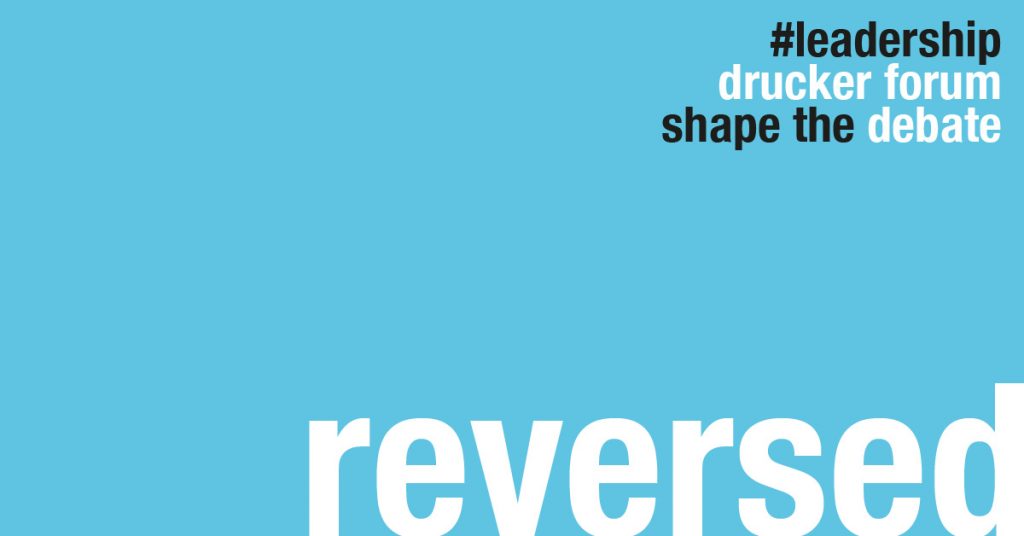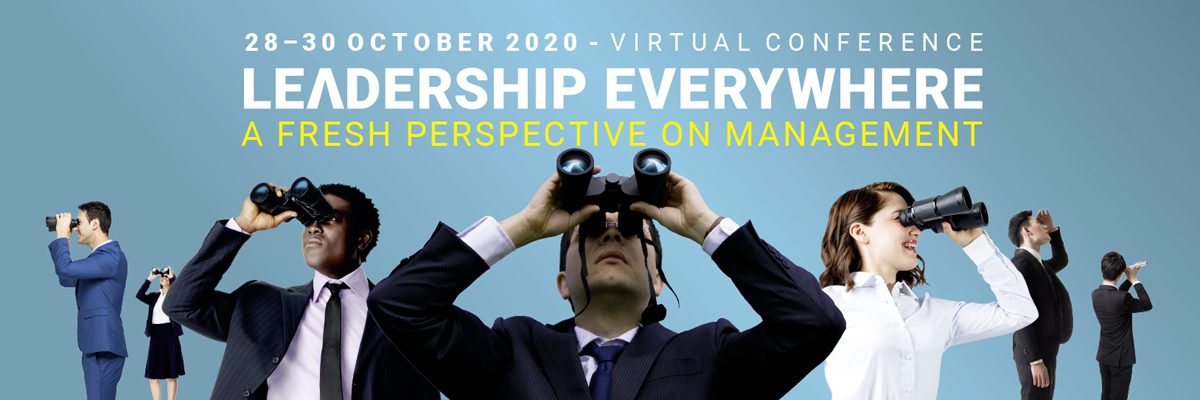
Reversed leadership makes organizations more resilient. The need for resilience has never been greater than now. As Peter Drucker said, “The greatest danger in times of turbulence is not the turbulence; it is to act with yesterday’s logic.” How can management go beyond yesterday’s logic? By practicing reversed leadership.
Leadership has little to do with hierarchy and everything to do with exerting influence that brings about change. Exerting influence and playing a reversed leadership role is grounded in two fundamental behaviors: practicing wise ignorance and listening to the edges.
Drucker Forum 2020
Practice wise ignorance
Leaders need to live attitudes of wise ignorance, learning to say, “I don’t know”, inviting questions and debate. They need to embrace uncertainty and ambiguity, knowing that no one has all the answers. They must be able to admit they do not know everything. And by encouraging everyone in the organization to do the same they create a culture stronger than one based around agreements and consensus. Trying to build consensus decreases resilience because it limits the number of opinions and options when a crisis comes, and decisions are needed.
The diversity of thought and ideas that result from wise ignorance and an open and participatory leadership style enable the organization to be better prepared when a crisis happens. Unfortunately, few leaders understand this.
In my annual global surveys, I asked approximately 300 organizations if their leaders had an “open and participatory” leadership style. In 2013, only 13% “strongly agreed” and in 2018 that proportion had barely crept up to 19%. If we include people who replied “somewhat open and participatory”, we only reach approximately 50%. These figures are discouraging. They stagnated as shown by four surveys over a six-year period and indicate that top leadership in most organizations is stuck in a hierarchical, command-and-control mindset. When unexpected events occur, their automatic reaction will be to look at best practices and benchmarking–all based on the past–and unlikely to be suited to the present context.
Listen to the edges
Staying in touch with the present reality means being close to the action. People on the edges are often customer-facing and see more of the external world than do people in the inner parts of the corporation. They are the organization’s eyes and ears, picking up signs of disruption and changing needs faster and earlier than their more internal colleagues. These front-liners are usually far from the decision-making center, and the reality they see is too often blurred by management filters. Understanding the constantly evolving context requires connections and interactions between the edges and the center.
Act with today’s logic
Peter Drucker’s message rings stronger than ever. Leaders must go beyond yesterday’s logic and act with today’s logic. This means building a new work culture that encourages questioning the status quo, continually scanning the horizon and listening to different voices that challenge ingrained practices. The wealth of information, diversity of ideas and new energy that flows from this style of leadership leads to new, unimagined opportunities. This approach personifies reversed leadership. People are mobilized to influence change from wherever they are in the organization. A foundation is built for proactive resilience that prevails through turbulent times and beyond any given crisis.
Do you have reversed leadership?
Ask yourself these four questions to see if reversed leadership exists in your organization:
- Are people regularly encouraged to give input to business goals and plans?
- Do people feel free to challenge business models and work practices, to question the status quo, and to propose new ways of working?
- Is it relatively easy to get a new idea to someone at the senior executive level?
- Are there systems for getting input from the edges, such as from the customer-facing colleagues?
About the Author:
Jane McConnell, author of The Gig Mindset Advantage: Why a Bold New Breed of Employee is Your Organization’s Secret Weapon in Volatile Times, (available in April 2021) and has conducted 12 years of research on organizations in the digital age.
This article is one in the “shape the debate” series relating to the fully digital 12th Global Peter Drucker Forum, under the theme “Leadership Everywhere” on October 28, 29 & 30, 2020.
#DruckerForum

